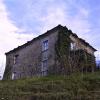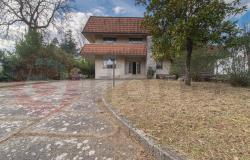In reply to A newbie all over again! by Annec
Ok so they're warmer in the summer, sometimes too much so, what solutions in the colder months? Here's a good one..Wallrock thermal liner... energy saving up to 30odd%, and time for heating a room reduced by approx 60%......where can I get it I hear you cry!!! Ahh.....I know a man....!
Hi mbc. What is Wallrock
Submitted by moruzzo on Fri, 01/20/2012 - 17:20In reply to A newbie all over again! by Annec
DANGERS OF GENERALISING
Submitted by Gala Placidia on Sat, 01/21/2012 - 00:34In reply to A newbie all over again! by Annec
Perhaps it is better not to generalise as each house is different. Depending on the location, aspect, the materials used, ventilation and the general layout, Italian houses can be nice and warm or cold in winter and hot in summer. In any case, proper insulation and good double-glazed PVC windows and doors contribute to maintain a good temperature and reduce your energy bills. We have discussed these matters at length and, should you need help, do a little search through our search facility on the top right hand side of the screen.
In reply to DANGERS OF GENERALISING by Gala Placidia
ISOLAMENTO A CAPPOTTO
Submitted by Gala Placidia on Sat, 01/21/2012 - 22:40You may be talking about this form of insulation, "cappotto" means a cape. Sorry, I head about the expression; however, I do not know much about the system. Perhaps someone else could help. In my opinion, any type of insulation is great, it all depends on the characteristics of the area you need to insulate. Sometimes lined curtains and carpets or rugs can make wonders... I guess that you have to study the particular house and see the origin of the problems and how the cold air gets into the building. Same case, in reverse, for heat.
Italian houses
Submitted by Mick chick on Sun, 01/22/2012 - 12:45In reply to A newbie all over again! by Annec
I worked as a structural engineer in the UK for over 40 years and I am still suprised how badly Italian houses (new ones) are constructed. The old stone ones have similar problems but they are old!! The building regs do not appear to require a DPC, hence problems with rising damp. There is no understanding of how cold bridges work and the problems that they will cause. Damp and mould. As far as insulation is concerned be careful about fitting insulation to the walls inside or out, if calculations have not been considered the dew point could be in the wrong location and dampness can occur on the walls. Seek the advice of a good H&V engineer.
Hi Mick chick, I am…
Submitted by Patrick Horgan on Mon, 02/14/2022 - 08:45In reply to Italian houses by Mick chick
wall insulation
Submitted by godzillavilla on Tue, 01/24/2012 - 11:43In reply to A newbie all over again! by Annec
I have friends in an old stone house north of Milan and they have put sughero panels on the inside of their walls on the north side and in the thin parts of the window wells. They put up wood batting and attached the panels to that, then plastered over the whole lot (mano grezzo, etc) just as though it were the stone. You can't tell the difference in terms of the final look of the plaster, but it's neutrally warm to the touch in winter.
Roof insulation
Submitted by atessa on Tue, 01/24/2012 - 14:05In reply to wall insulation by godzillavilla
Hi Godzillavilla,When you had the roof renovated they should have put thermal insulation between the cotto tiles.Not sure what it is called but it keeps you cool in summer and keeps the heat in when its colder.This would be part of the building regs required when you had your plans approved. All the best Atessa.
roof insulation
Submitted by godzillavilla on Mon, 01/30/2012 - 21:45In reply to Roof insulation by atessa
Yes our new roof is (thankfully) completely insulated and vapour barrier'd etc. A very nice job in fact - totally worth having it well done. No roof, no house, as the villa's original state can attest. The roof had been allowed to fall apart, and everything inside was ruined as a result.
Thermal liner, is basically a
Submitted by mbc on Tue, 01/24/2012 - 16:57In reply to A newbie all over again! by Annec
Thermal liner, is basically a thermally backed lining paper, relatively cheap, and very quick and very clean to use, no mess, and using a professional, an average house can be done in about 7 days. It works along the theory of stopping the heat being wasted on heating cold walls, the heat remains in the room, therefore bringing it to the desired temperature more quickly, hence with a roomstat, (wall mounted thermostat) cutting down on gas use. Its efficiency will vary in accordance with the type of existing insulation etc, double glazed windows, timber floors or rugs over tiled floors all help. As mick chick suggested, new builds in italy, from an insulation point of view are not to the same standard as british built houses, where there is more emphises on conserving heat, and reducing expenditure. Brit houses are built to withstand the cold, whereas italian houses seem to be more geared up to withstand the summer heat. I have lived and worked here for over 10 years, and the winters, ( I am in southern Marche) can be cold, albeit shorter than the Uk winters. The summers although they can reach into the high 30's and even the low 40's, it is for a relatively short period, central heating, and/or the simple need to raise the temperature in the house, is realistically still half of the year, october to april...... The good thing about the wallrock thermal liner is that it can be done without any dia or permission or expenditure to geometras or comune, it is a paper hanging job. And the money spent, is recovered with lower gas bills, and better living enviroment.
Loft insulation
Submitted by richardp on Sun, 04/22/2012 - 07:29In reply to A newbie all over again! by Annec
Sorry if this has been answered before but is there any problem with putting in glass fibre type loft insulation as used in the UK? I have never seen it for sale in DIY stores in ItalyI guess that with the smaller roof pitch here it will be tricky to get right into the corners but is there anything else?
This could be a helpful link
Submitted by Gala Placidia on Mon, 04/23/2012 - 01:48In reply to A newbie all over again! by Annec
This could be a helpful link regarding insulation materials: www.poliart.it Enter "ediliziz" and you will find a catalogue.
loft insulation
Submitted by richardp on Mon, 04/23/2012 - 18:20In reply to A newbie all over again! by Annec
Thanks both for your comments Flyingveepixie- yes I understand the need for ventilation. The eaves in our Italian house are not open (like in UK) - I suspect the ventilation is in the gaps between the roof tiles! Generally I agree it is often easier to buy stuff in the UK and take it over - but loft insulation is pretty bulky... Gala Placidia - thanks for the link, this shows just what I want to do under "rockwool". I found a similar description on the Leroy Merlin site though they do not seem to sell the "isolante" -maybe it is seasonal and i need to try again in October.








